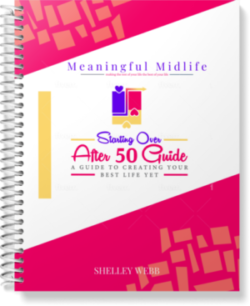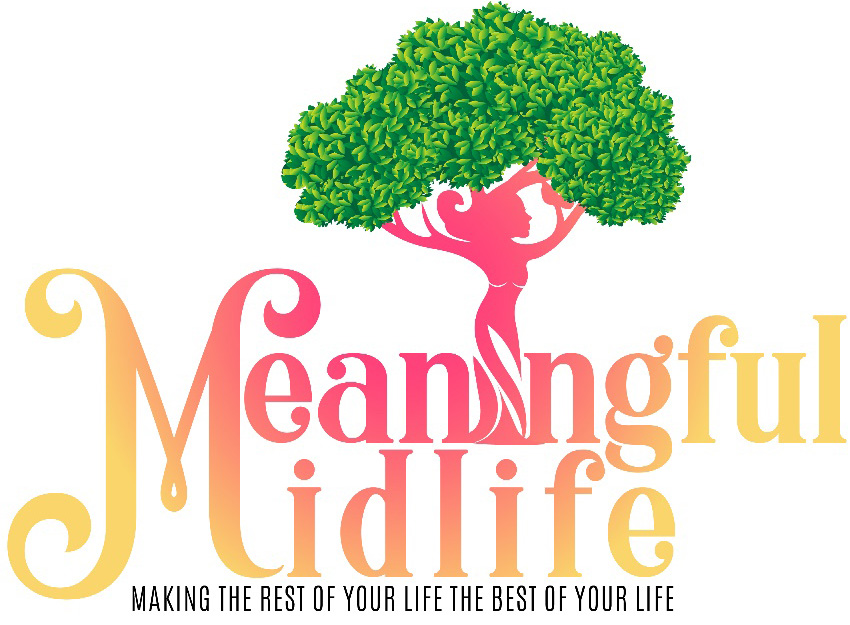I’ve just returned from a quick trip to Canada in order to bring my 87 year old Mom back to her home there. She lives alone in an apartment that has slowly developed into a place where many seniors live, but that doesn’t have the designation (or services) that a senior living apartment complex would have.
As such, there is limited security, no monitoring, no one assigned to check the residents, no accessibility features and it is quite an old building. In fact, while my mother was visiting me, we received a report that her sliding glass door had fallen out onto the balcony and shattered. As it was determined not to be the result of a break-in, the manager of the apartment suggested that it was due to “a shifting of the building”.
Before you ask, let me say that no, I could not convince my mother to change residences nor to live with my sister or me. As many senior adults do, she prefers to remain independent.
Having spent the last 6 weeks with her, I see the need to put some safety measures into place if she is to continue to remain in her current residence. Her mind is still sharp but she is having some balance issues and has already “tripped over a blanket” and bruised her ankle quite badly. Because there is no one who regularly checks on the residents, if she were to fall and break a hip, she might lie there for days without help.
There are many new technological advances available that help to ensure the safety of a senior adult in their home.
There are Personal Emergency Response Systems (PERS) which utilize a button that a person can push in case of emergency (some of these systems are also outfitted with fall detectors). There are medication dispensing systems that can be loaded (by a care provider or family member) with up to 60 doses of medication and which will send audible reminders to the senior adult that it’s time to take their pills. There are even elaborate home monitoring systems which have information that the off-ste caregiver can monitor via the interent. These systems can alert the caregiver if, for example, the senior adult did not rise from their bed before a designated time.
According to an article in the New York Times, entitled “The Technology of Monitoring Elderly Relatives” dated July 28th, 2010, one such system is being utilized by Carol, who is keeping tabs on her 79 year old mother who has been disabled by a brain aneurysm.
The article stated that Carol receives cellphone alerts whenever a user-defined set of parameters is breached in her mother’s nearby Daytona Beach, Fla., home.
“I used to call and check on her constantly,” Carol said. “If she gets confused, she wouldn’t remember to push a pendant.”
Carol is automatically alerted if her mother’s front doors are opened before 7 a.m. or after 10 p.m., and a bed sensor alerts her if her mother doesn’t get out of bed by 9 a.m.
If her mother’s home is too hot or too cold, she knows that, too. And if her mother begins to get confused and wanders rapidly from room to room, her daughter also receives an alert.”
To read that full article, go here.
There are also ways that senior adults can be monitored when outside the home. Several companies have devices that are small enough for an elder to carry with them (some can be worn around the neck, wrist or clipped on the belt) and have a variety of functions such as fall detection, cell phone capabilities, and emergency alerts.
While I agree that the development of this technology is a great asset, I have a couple of concerns.
First, if we rely too much on the technology, certain things may be overlooked.
What about nutrition – how do we know that our aging parent or loved one is buying AND eating a nutritionally balanced meal? How do we know how long the thawed chicken has sat on the counter or the luncheon meats have remained in the refrigerator? How do we know how much the senior adult has eaten and how much is being tossed in the trash?
How do we know that the senior adult is bathing and/or performing other hygiene activities often enough? If mouth care is not done often enough, oral disease can occur and can affect the senior adult’s appetite.
Although technology can alert the off-site caregiver to the amount of exercise that is being done by the elder adult by determining movement, the type of exercise cannot be monitored. Senior adults need weight bearing exercises and activities that will help to maintain their balance, not just movement. (I’ve noticed that my mother has become much less mobile since moving to an apartment of her own and
What about scam artists who aim their schemes at the elderly? Can technology protect them well enough?
Isolation could become a problem. Will the use of technology take the place of visitors who used to pop in to check that all is well? (There are currently robots being developed that will aid the senior adult in their daily activities, but can these robots give hugs?)
The off-site caregiver may be negatively affected as well. What if he or she is not in a position to respond when the alarm for help goes off? What if the frequency of alarms is high? What if the alarms continuously sound at night? Will the off-site caregiver become glued to the home monitoring system? All of these situations can cause increased stress to both the off-site caregiver and the senior adult who is waiting for a response.
And lastly, the use of technology can be expensive. Certainly, it is less expensive than an assisted living facility or a nursing home, but do the advantages of keeping the senior adult in their home without human assistance outweigh the chances of isolation, poor nutrition, lack of exercise, possible depression and uncleanliness?
I guess what I’m saying is that the technology is a great tool to be utilized but we must be cautious not to let it be the predominant method of off-site or long-distance caregiving.
LEARN TO LOVE YOUR LIFE AGAIN
 Do you feel like you need to hit the REFRESH button on your life? Download our free guide and begin to create your best life yet!
Do you feel like you need to hit the REFRESH button on your life? Download our free guide and begin to create your best life yet!



Shelley, your article has many good points. At MedFirst Alert we recognize that technology is not the only consideration when dealing with an aging parent. The aging senior should be properly evaluated before placing a medical alert system (PERS) in the home to determine if it’s an appropriate method of intervention.
John
Your article struck so many chords in me I don’t know where to begin. When I grow old, I hope to live in a senior complex where I will never have to go far to find somebody my own age, who wants to play cards, go for a walk, watch a hockey game on television, play golf, or have a nice glass of wine and just talk. And when I want my privacy I will simply go to my apartment and close my door. It reminds me of University residence… a wonderful time in my life! But it seems most seniors don’t feel this way. They want to stay in their own home. They don’t want to move into any form of retirement living. They don’t want to inconvenience their children by moving in with them either. Even if the exciting retirement living I describe above appeals to them, the vast majority (80%) of our senior population could not afford it. It breaks my heart to think of an elderly gentleman or lady spending fourteen of their waking sixteen hours a day sitting at home alone. But that is reality. So how do we make the best of this? We need to continue to attract resources whether they be paid or volunteer so we can make certain our seniors are eating, bathing, exercising… as you have suggested. But we also know there are not enough human nor financial resources to deal with the aging population. And informal caregivers (children) have only so much time and money to contribute. So as you cautiously point out, technology has a role to play. It can be a significant role! It can keep our seniors safe and healthy. Of equal importance, it allows the informal caregivers to continue to properly care for their elderly loved ones, instead of burning out in this role. Burning out is not good. It leads to senior abuse, desertion, or premature placement into long term care facilites. Let’s look at a real life example. John is married with two young boys. He owns his own business and has a very demanding schedule. His mother is 72 and has been diagnosed with Alzheimers. She lives alone in her apartment. She is scared, but refuses to move in with John and his family. John cares deeply for his mother and would do just about anything for her. He is very concerned as to how he will keep her safe and healthy. He learns from the doctors how important excercise, eating, sleeping, and taking her medications will be to the progression of this disease. He goes to bed at night worrying about her wandering out a door and getting lost and/or hurt. He cannot wait to get up in the morning and call her to make certain she is still in her apartment. He also worries about her falling during the night, another worry that is relieved only when he hears her voice on the phone in the morning. Making certain she takes the right medication twice a day, and at the right times is a challenge. So John, his wife, his brother Bill and his sister in law Debbie all call her several times a day. The calls are all the same. “Hi. How are you? Did you sleep well? Did you eat breakfast this morning? Did you take your pills?” The calls are not fun. Not social. The kids don’t like the calls and neither does Mrs. Whitehead. They are all well intentioned, but it is like an interrogation rather then a social call. These calls should be to tell her about her grandchildren’s hockey game. What the kids did at the cottage this weekend. Fun things. But they are not. Everyone is too focussed about making certain all is well. By the way, the kids are all calling and e-mailing each other to report back and ask questions of each other. So… enter technology. CareLink Advantage (in Canada and BeClose in the United States) is one of the systems you speak of in your article. The children asked their mother if she was o.k. with them putting this equipment into her apartment. They told her what it was for and what it did. She felt it was a good thing and would keep her safer. Now when the kids go to bed at night, they don’t worry about her falling. If she does, the system will contact them. She does not have to push a button for this notification to happen. It is automatic. If she wanders out a door at night, the system will contact them. They now go to bed without worry, every night. If she does not take her medication on time, the system will contact them. They simply give her a call and remind her to take her medication. She was offered the option of having an automated system call her twice a day to take her medication and she was insulted. “I don’t need somebody calling every time I need to take my pills. I’m not stupid. That would drive me nuts.” So this system only creates a prompt from family members on an exception basis. When she forgets to take them. When she does take them, the children recieve a video clip that allows them to clearly confirm that she has taken the “correct” medication. So they can intervene if she ever takes the wrong ones. Medication compliance, undetected falls, and wandering are the biggest concerns for these caregivers. Technology took these concerns away, and the social and personal relationship came back. The phone calls and visits were no longer interrogations. They became social visits again. The technology also tracks sleeping, eating, and nightly washroom visit patterns. This valuable information is communicated to doctors. John’s mother is safer and healthier. The burden of caregiving for the children is greatly reduced. They can maintain this caregiving role, and do it properly… with love.
So I agree that technology cannot provide all the neccessities. It cannot bath a person, change a dressing, or give them a hug. And it could be misused by some and create isolation rather then prevent it. But all things can be misused. That is no reason for us not to embrace it and use it for the good purpose it is inteded for. It can keep seniors safer and healthier. It can assist informal caregivers in their caregiving role. We cannot afford to lose our informal caregiving resources in this country. We need to support them. And finally, it is affordable for those families who cannot afford retirement living, assisted living, or the wonderful and professional home care services that are available. And it is rapidly becoming affordable for the average family. For $5.00-$6.00 per day, I think we will see a huge uptake on technology in this sector. And like you, I hope it is used properly in conjunction with other support systems… the human touch and hug maintaining the top spot.
Visiting Nurse Service of New York blogger and RN Amy Dixon Drouin posted this piece for 10 iPhone apps for Creative Caregivers http://blogs.vnsny.org/2010/06/20/ten-iphone-apps-for-creative-caregivers/ that may be helpful for some of you readers.
The apps were excellent, thank you for sharing. I particularly liked the iMelodies app.
Intentionally yours,
Shelley
Hi John,
I wholeheartedly agree. Thank you for the reply.
Best,
Shelley
Hi John,
You make some good points and I do plan to suggest the use of some technology in order to keep my Mom safe in her current home. Perhaps I am just mourning the loss of the family unit that was once a celebrated part of our continent and others. (And thank you for letting me know that your company provides services in Canada.)
Best regards,
Shelley
Technology can be a tough issue indeed. As you said, we rely a lot on it and tend to overlook the more human aspects of our day to day activities. However, I agree with you in that there are a wealth of products and services available to seniors which make them more comfortable and safer. These products are by no means a “cure-all” for all of life’s situations, but they sure make them easier! Thank you for sharing this post and the article.
http://www.firststreetonline.com